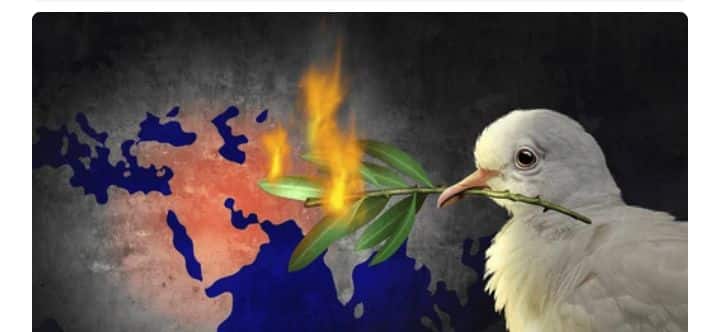Conflict and peace studies is a rich and multidisciplinary field aimed at understanding the nature of conflict, the causes behind it, and the strategies available for conflict resolution and peace building. From individual disputes to global conflicts, the field explores both the micro and macro aspects of human interaction, drawing on insights from sociology, psychology, political science, history, and international relations. This article provides a comprehensive overview of conflict and peace studies, focusing on the causes of conflict, methods of conflict resolution, and sustainable peace building strategies.

Causes of Conflict
Understanding the causes of conflict is central to conflict and peace studies. While conflicts vary widely in scope and intensity, the underlying causes can often be grouped into a few major categories:
1. Structural Inequalities : Conflicts often arise from systemic inequalities within societies, such as economic disparities, social stratification, or unequal access to resources. Groups that feel marginalized or oppressed may resort to conflict as a means of challenging the status quo.
2. Identity and Cultural Differences : Differences in ethnic, religious, or cultural identities are a common source of conflict, particularly in heterogeneous societies. When individuals or groups feel their identity is threatened, they may engage in conflict to protect or assert their identity.
3. Political Power Struggles : Conflicts over power and governance are common, especially in regions where political systems are fragile or authoritarian. Struggles for control of the state or resistance against perceived political oppression can lead to violent confrontations.
4. Resource Scarcity : Competition over limited resources, such as land, water, or minerals, often leads to conflict. As populations grow and environmental degradation accelerates, resource scarcity is becoming an increasingly pressing cause of conflict worldwide.
5. Historical Grievances : Longstanding grievances, often rooted in historical injustices or colonial legacies, can fuel conflict for generations. These grievances often become entrenched in collective memory and are passed down through generations, sustaining a cycle of conflict.
6. Psychological and Behavioral Factors : Human behavior, including aggression, fear, and the desire for control, can also drive conflict. Studies in psychology suggest that miscommunication, misunderstandings, and deep-seated fears of the “other” can easily escalate tensions.

Conflict Resolution Approaches.
Conflict resolution is the process of mitigating or resolving disputes and can take several forms depending on the nature and scope of the conflict. Key approaches include:
1. Negotiation : One of the most common methods, negotiation involves direct discussions between conflicting parties to reach a mutually acceptable agreement. Effective negotiation often requires good faith efforts, compromise, and skilled mediators who can guide both sides toward a resolution.
2. Mediation : Mediation involves a neutral third party facilitating discussions between conflicting groups. The mediator does not impose solutions but helps both parties communicate more effectively and explore potential compromises. Mediation is often used in interpersonal and organizational disputes but is also applied in international conflicts.
3. Arbitration : In arbitration, a neutral third party reviews the evidence and arguments from both sides and then makes a binding decision. Arbitration is frequently used in legal disputes but can also apply to broader international conflicts where both sides agree to abide by the decision of the arbitrator.
4. Diplomacy : Diplomacy is a key method in international conflict resolution. Through dialogue, negotiation, and treaties, diplomats work to prevent the escalation of conflicts between states and ensure peaceful coexistence. Diplomacy can be preventive (seeking to avoid conflict) or reactive (aiming to manage or end an existing conflict).
5. Restorative Justice : This approach focuses on healing and reconciliation rather than punishment. In cases of interpersonal or community conflict, restorative justice emphasizes the restoration of relationships, the acknowledgement of harm, and collective efforts to repair the damage.
6. Peacekeeping and Intervention : International organizations, particularly the United Nations, may deploy peacekeeping forces to conflict zones to maintain order and facilitate negotiations. In more severe conflicts, military intervention may be used to prevent violence or genocide, although such actions remain controversial due to issues of sovereignty and long-term efficacy.
Peacebuilding
Beyond Conflict Resolution Peace building goes beyond simply resolving conflicts. It aims at creating sustainable peace by addressing the underlying causes of conflict and fostering societal resilience to future disputes. The process involves a combination of short-term and long-term strategies aimed at fostering reconciliation, rebuilding institutions, and promoting social justice. Key aspects of peace building include:
1. Post-Conflict Reconstruction : After conflicts, societies must rebuild both their physical and social infrastructure. This includes rebuilding schools, hospitals, roads, and homes, as well as restoring legal systems, governments, and other institutions. Effective post-conflict reconstruction also includes economic recovery initiatives, such as creating jobs and ensuring equitable access to resources.
2. Reconciliation and Social Healing : In the aftermath of violent conflicts, especially those involving atrocities or human rights abuses, reconciliation efforts are crucial. Truth commissions, such as South Africa’s post-apartheid Truth and Reconciliation Commission, provide a platform for victims and perpetrators to recount their experiences and work toward collective healing. Social healing also involves re-establishing trust within communities and promoting inter-group dialogue.
3. Democratization and Political Reform : For peace to be sustained, post-conflict societies often require political reforms that promote democracy, accountability, and participation. This might involve drafting new constitutions, reforming electoral systems, or decentralizing power to reduce tensions between different political or ethnic groups.
4. Economic Development and Social Justice : Economic inequalities often drive conflict, so addressing these inequalities is essential for peace building. Initiatives aimed at economic development, job creation, poverty reduction, and equal access to resources are fundamental to building a peaceful society. Social justice efforts, including land reforms and equitable resource distribution, are also crucial in preventing future conflict.
5. Civil Society Empowerment : Strengthening civil society is critical to peace building. Civil society organizations, including local NGOs, women’s groups, and religious institutions, often play key roles in peace efforts by advocating for human rights, facilitating dialogue, and providing support services to marginalized communities.
6. Education for Peace : Educating citizens about peace and conflict resolution is a key long-term strategy. Peace education programs teach individuals and communities about nonviolent communication, empathy, and conflict resolution skills. Such education is crucial in transforming societies and preventing the recurrence of violence.

Conclusion.
Conflict and peace studies provide invaluable insights into the complexities of human interaction, from personal disputes to global wars. Understanding the root causes of conflict, developing effective methods for conflict resolution, and implementing long-term peace building strategies are essential for fostering a more peaceful and just world. As the global landscape continues to evolve, conflict and peace studies will remain a vital field, guiding societies toward resolving differences without resorting to violence and building sustainable peace for future generations.




